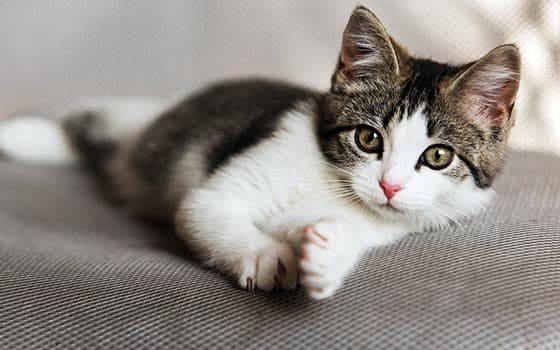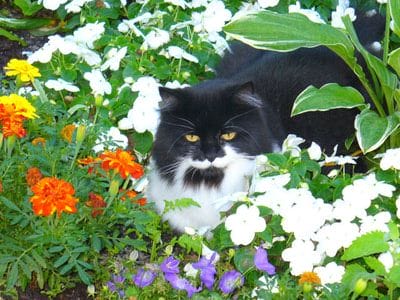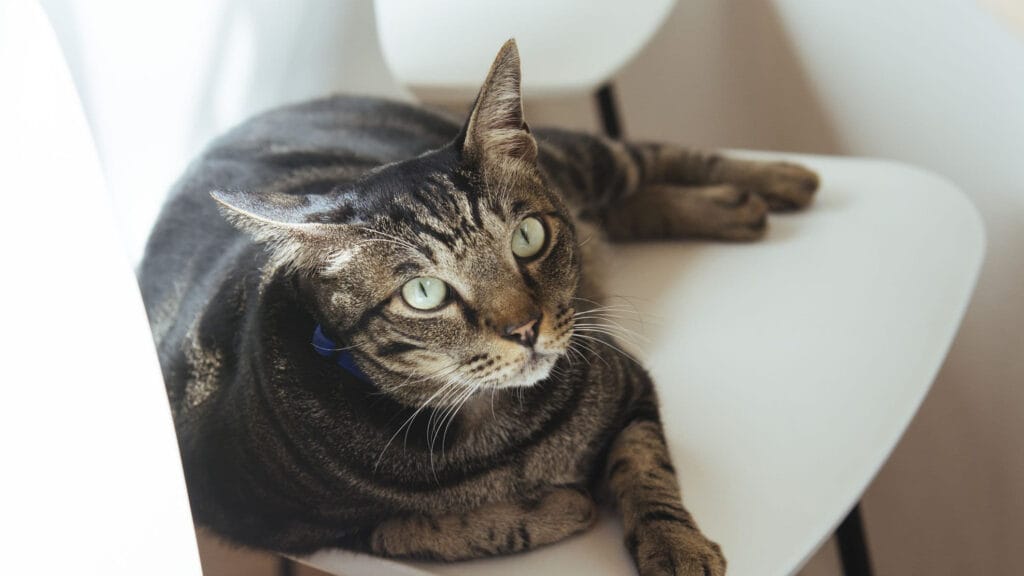Characteristics, History, Care Tips, and Helpful Information for Pet Owners
Unrelated domestic cats mixed-breed, or Felis silvestris catus, are typical house pets. House cats are another name for them, and the British call them “moggies.” Despite not having breeding papers, they continue to be beautiful, noble, and loving companion animals. Cats have long been kept as domestic pets. On the Mediterranean island of Cyprus, a 9,000-year-old cemetery revealed a cat buried next to a human, most likely as a companion animal.

Breed Overview
- WEIGHT: 8 to 10 pounds
- LENGTH: About a foot and a half long
- COAT: Varies; short, medium, or long
- COAT COLOR: Wide variety; Most common colors include black, white, gray, and red (orange) with tabby, calico, tortoiseshell, and tuxedo color patterns.
- EYE COLOR: Wide variety; although greenish-yellow to gold is most common
- LIFE EXPECTANCY: 14 to 20 years
Characteristics of the Domestic Cats
| Affection Level | Medium |
| Friendliness | Medium |
| Kid-Friendly | Medium |
| Pet-Friendly | Medium |
| Exercise Needs | Medium |
| Playfulness | Medium |
| Energy Level | Medium |
| Intelligence | High |
| Tendency to Vocalize | Medium |
| Amount of Shedding | Medium |

The history of the house cat
The history of cats kept as pets is extensive. It is believed that domestication of cats occurred in the Middle East about the time that humans first engaged in agriculture (estimated 12,000 years ago). Cats were used to keep rodents away from grain storage places. They were considered sacred by the Egyptians and mummified alongside their owners. Cats were highly sought-after in both the city and the countryside due to their capacity for rodent hunting. A typical feline cancer is lymphoma. If your cat resembles a known cat breed, you can describe it as a mix. However, without registration paperwork from a breeder, you won’t be able to enter it in a cat show as a certain breed. At cat exhibitions that allow them, these cats are presented in the Household Pets or Domestic Cats classes.
Domestic cats were common in Europe, Asia, Africa, and the Middle East, but until European explorers introduced them, they were unknown in the Americas and Australia. The ships that transported cats to the New World were used to control rats on board.
Domestic cats can transform back into wild cats and can adapt to a variety of settings, such as marshes, wooded areas, and city streets. In zoos and the foster homes of cat rescue organizations, alley cats and street cats frequently end up.
The American Veterinary Medical Association estimates that more than 74 million families in the US have cats as pets, or more than 30% of all households. There are between 25 and 60 million feral cats worldwide.

Domestic cat care
Most mixed-breed owners don’t understand that domestic cats can be large, little, patterned, or tailless depending on their ancestry.
Most cats are careful and self-cleaning by nature. You may reduce matting and possibly prevent hairballs by brushing your cat. Trim your cat’s nails every two to three weeks, and provide him a scratching post. If your cat will let you, give them a regular dental cleaning. Typically, cats’ teeth need to be cleaned by the vet.
Cats who spend most of their time indoors live the longest. For instance, while outdoor cats frequently only live 3 to 10 years and wild cats typically live 4 to 5 years, indoor cats can live up to 20 years.
It can be difficult to keep outdoor cats from roaming because they are often skilled at scaling any fence. Cats who go outside run the risk of getting sick from other animals, getting into dangerous fights, getting attacked by predators, or getting run over by moving vehicles. Cats may injure or kill outdoor birds and other wildlife.
Indoor cats will need a quiet place to use the bathroom. Make care to clean the box properly at least once a week. By utilizing clumping litter and daily brushing up the clumps, you can keep things tidy.
Your indoor cat needs plenty of chances to play and chase toys. You should play actively with your cat each day. Some felines can be trained to walk on a leash. Cats enjoy taking lengthy naps and sleeping a lot, so make sure your home has a comfy bed and plenty of places for your cat to unwind.
From aloof to clingy, cats can display a wide spectrum of personalities. A cat’s tendency to be wary of strangers can be reduced through early exposure to a variety of people. Cats frequently get along with other cats and canines who are also cat-friendly when they are raised together. Domestic cats have a natural instinct to hunt rodents, birds, and fish whether or not they are kept as pets. It is only right to keep those creatures far away from your cat.
Common Health Problems
Spay or neuter your cat by the time it is five months old if you do not intend to breed the animal. Make sure your pet has all of their vaccinations and scheduled appointments in order to avoid common and dangerous problems.
Mixed breeds typically have superior general health since they are less likely to get breed-specific diseases. No cat is fully risk-free from health problems, though. According to the American Society for the Prevention of Cruelty to Animals, the following ailments affect cats the most frequently:
- Keep a watch out for any lumps or strange changes in the skin as cancer is usually prevalent in older cats.
- A mixed-breed cat is essentially a cross between two different breeds of cats, such as a domestic cat and a purebred cat, biologically speaking.
- Diabetes is more likely to affect male, aged, and obese cats.
- The feline immunodeficiency virus can be transferred from one cat to another during cat fights that result in deep bites. To avoid it, keep your cat inside and away from aggressive or territorial cats.
- Cats are more likely to develop blood cancer as a result of the feline leukemia virus compromising their immune systems. The feline leukemia virus vaccine can help cats reduce their risk of getting the disease.
Food intake and diet
Cats require taurine because they are naturally carnivorous. Although it’s generally advised that cats eat only wet food, you can also put out dry food for them to snack on. You will go over your cat’s needs with your veterinarian, especially if your cat has diabetes, is obese, or is older. It is advisable to monitor your cat’s weight and take care to prevent it from accumulating too much weight, which could shorten their lifespan. Your cat must always have access to fresh, clean water.
Pros
- Due to its mixed breed, the cat is less likely to experience health problems exclusive to that breed.
- Animals of mixed breeds typically have longer lifespans than the norm.
- These cats often don’t need any particular diets or care.
Cons
You normally won’t know a cat’s lineage or whether it has a history of health problems if it is a mixed breed.
You won’t be aware of your cat’s attributes until it is an adult, unlike purebred cats who share traits.
Where to look for domestic and mixed-breed cats for adoption or sale
A local rescue organization should be able to help you find a domestic, mixed-breed cat; look into:
- Adopt a Pet at Catfoodsite ASPCA
Breeds of Cats Not Listed Here and More Research
Before opting to buy a domestic cat, get advice from other cat owners, reputable breeders, and rescue organizations. Shelters are crowded with adorable domestic cats waiting for their perfect forever homes. They come in all shapes, sizes, coat colors, and patterns.
READ NEXT: How to Tell if Your Cat is a Purebred

